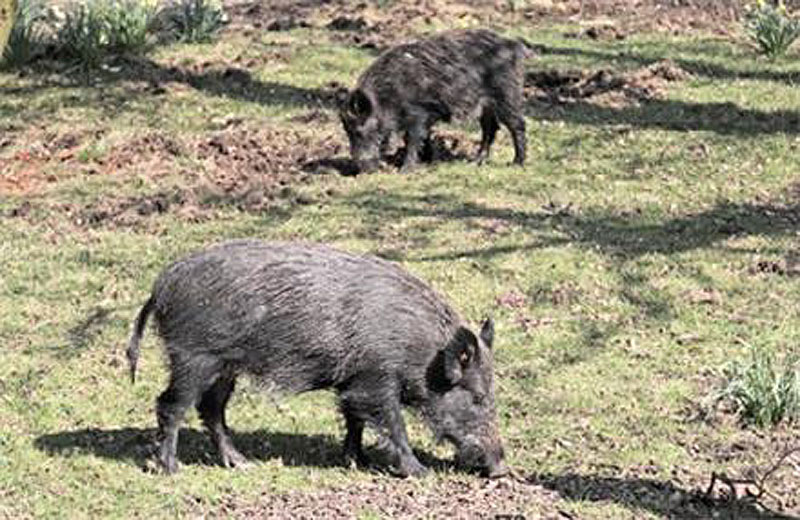LUBBOCK, Texas — A competition aimed at curbing the feral hog problem in Texas has resulted in the demise of 12,632 of the animals that damage or destroy hundreds of millions of dollars in crops and ranchland every year, the Texas Department of Agriculture said Thursday.
Hardeman County on the Oklahoma border bagged the most — 2,047 hogs — in the Hog Out Challenge to win $20,000 to help with further abatement. Four other counties will share the remainder of the $60,000 in awards.
The department’s commissioner and candidate for Texas lieutenant governor, Todd Staples, said he’s put feral hogs on the state’s most-wanted list.
“We need to track down these destructive pests and eliminate them. Not only are feral hogs a costly nuisance to agricultural operations and wildlife habitats, but they are a serious threat to the traveling public and are increasingly finding their way into urban areas and destroying residents’ yards, public parks, golf courses and more.”
Last year’s contest ran two months longer than the inaugural one-month program and resulted in the elimination of 8,773 more hogs. There were 3,859 kills in 2010.
Clay County will receive $15,000, Lavaca County will get $10,000, and Callahan and Goliad counties each will receive $7,500. The formula for the awards was based on the number of animals killed and the number of people who attended educational forums on hog abatement.
Steven Sparkman, the Texas AgriLife extension agent in Hardeman County, said 44 counties participated last year, down from 60 the year before.
Funds from winning the contest could be used to pay for construction of more hog traps to either give away or sell at a discounted price.
“We’ve been dealing with hogs here the last 20 years or so,” he said. “And they’ve just progressively gotten worse.”
An estimated 2.6 million hogs cause $550 million in damage annually, including $52 million in agricultural destruction.
Armed with razor-sharp tusks, the hogs shred fields and pastures and wreck ecosystems by wallowing in riverbeds and streams. Even perennials planted at graves aren’t safe. In recent years, the hogs are increasingly showing up in urban neighborhoods around the state.
Feral hogs, which can stand 3 feet tall and weigh up to 400 pounds, make meals of lambs, kid goats, baby calves, newborn fawns and ground-nesting birds. They compete for food and room with many native species of wildlife.
The animals commonly destroy urban yards, parks and golf courses, as well as rangeland, pastures, crops, fencing, wildlife feeders and other property. Additionally, they contribute to E. coli and other diseases in Texas streams, ponds and watersheds.
The hogs are also a road hazard. Motorists sustain an estimated $1,200 in damage per collision.
Send questions/comments to the editors.



Comments are no longer available on this story